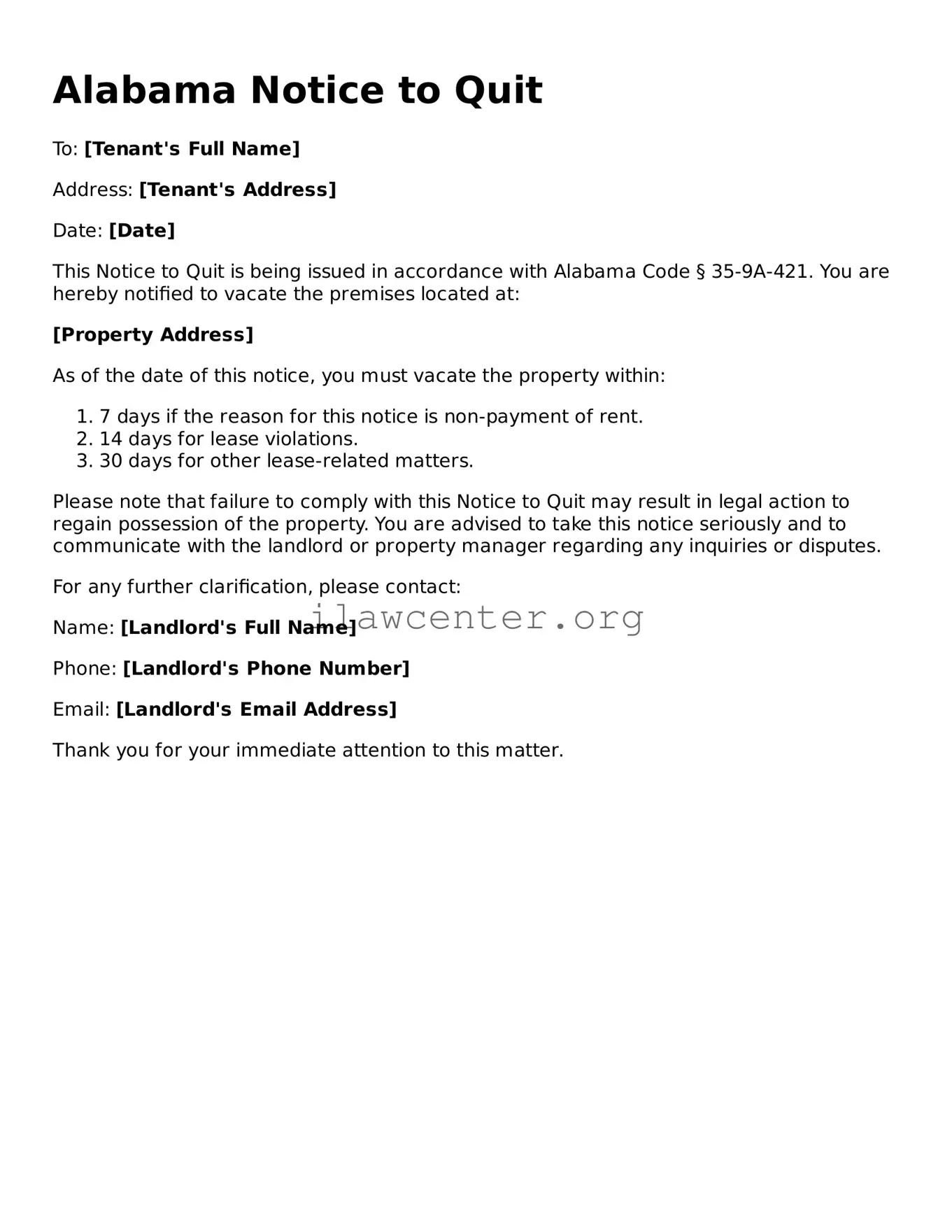What is an Alabama Notice to Quit form?
The Alabama Notice to Quit form is a legal document that a landlord sends to a tenant to terminate the rental agreement. This notice informs the tenant that they must vacate the property by a specified date. It is an essential step in the eviction process, ensuring that tenants understand they are required to leave the premises with proper notice.
When is a Notice to Quit required in Alabama?
A Notice to Quit is typically required when a landlord seeks to evict a tenant for various reasons, including non-payment of rent, breach of lease terms, or when the rental agreement has simply expired. The specific conditions for issuance may depend on the lease agreement and the nature of the tenant's lease.
How much notice must be given in a Notice to Quit?
The amount of notice required can vary depending on the reason for the eviction. Generally, landlords in Alabama must provide at least a 7-day notice if the tenant is being evicted for non-payment of rent. For other lease violations, such as damage to property, landlords may also provide 7 days or more, depending on the circumstances stated in the lease.
Can a tenant respond to a Notice to Quit?
Yes, tenants have the right to respond to a Notice to Quit. They can communicate their intention to vacate the property or dispute the reasons for the notice. If the tenant believes the notice is unjust, they may wish to seek legal advice to understand their options and rights.
What happens after a Notice to Quit is served?
After the Notice to Quit is served, the tenant has the specified time to vacate the property. If the tenant fails to leave by the deadline, the landlord can initiate eviction proceedings by filing a complaint in the local court. It is important for landlords to follow proper legal protocols throughout this process to ensure their actions are legally sound.
Is there a specific format for the Notice to Quit?
While there is no official template mandated by law, a Notice to Quit should clearly state the tenant's name, the property address, the reasons for the eviction, and the deadline for vacating the rental unit. Including all relevant details helps to avoid confusion and provides a clear record of communication between the landlord and tenant.
What if a tenant refuses to leave after receiving a Notice to Quit?
If a tenant refuses to leave after receiving a Notice to Quit, the landlord may proceed with legal action for eviction. This typically involves filing a lawsuit in the appropriate court. It is crucial for landlords to follow the proper legal channels rather than attempting to forcibly remove the tenant themselves, as this can result in legal consequences.
Are there any protections for tenants receiving a Notice to Quit?
Yes, tenants have certain rights and protections. For instance, if they believe that the eviction is retaliatory or discriminatory, they may have grounds to challenge it. Additionally, tenants facing eviction due to financial hardship may be eligible for rental assistance programs. It's wise for tenants to explore their options and, if necessary, seek legal counsel to understand their rights fully.
Can a Notice to Quit be issued electronically?
In Alabama, the law does not specifically dictate the method of delivery for a Notice to Quit. Therefore, it can be delivered electronically if both parties consent to this method. However, many landlords prefer to deliver it in person or via certified mail to have a clear record of the date and time of delivery, which may be critical in any future legal proceedings.
